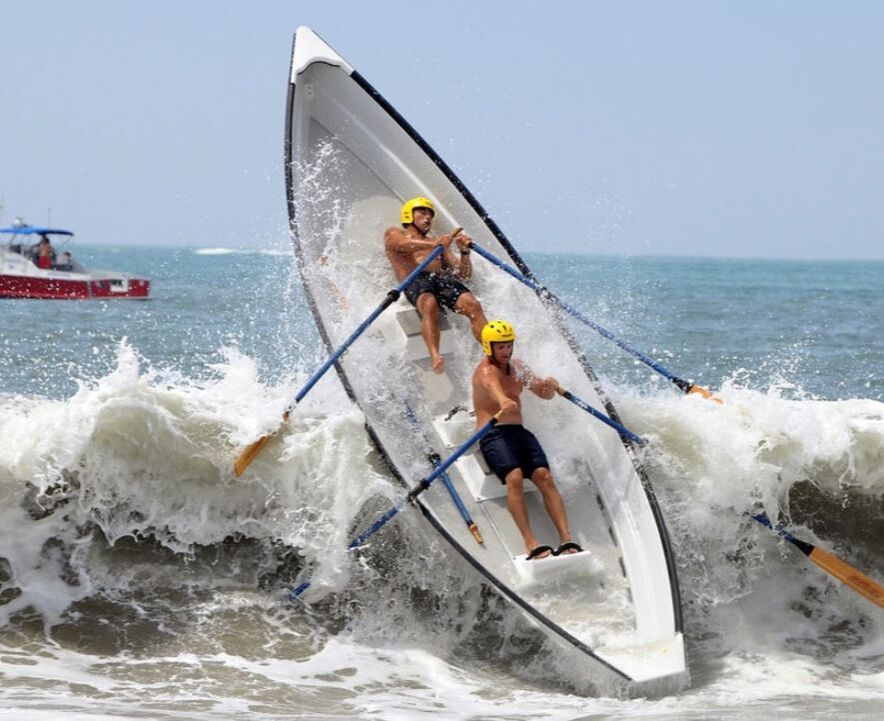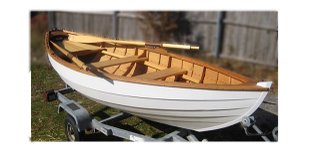| View previous topic :: View next topic |
| Author |
Message |
colbysmith
Joined: 02 Oct 2011
Posts: 4953
City/Region: Madison
State or Province: WI
C-Dory Year: 2009
C-Dory Model: 25 Cruiser
Vessel Name: C-Traveler
Photos: C-Traveler and Midnight-Flyer
|
 Posted: Sat Aug 10, 2024 5:38 pm Post subject: Posted: Sat Aug 10, 2024 5:38 pm Post subject: |
 |
|
| Foggy wrote: | | colbysmith wrote: | | Quote: | | Safety aboard a boat is more dependent on the boat than the operator(s). |
Laughable at best! You can have the safest boat in the world, but the operator can still muff it up! You lost me Foggy...
Colby |
Yes, one way to get lost communicating is to cherry pick statements.
Your pick, and conclusion, does not consider the original prior statement.

Aye. |
Uh, right…Whatever! |
|
| Back to top |
|
 |
thataway
Joined: 02 Nov 2003
Posts: 21469
City/Region: Pensacola
State or Province: FL
C-Dory Year: 2007
C-Dory Model: 25 Cruiser
Vessel Name: thataway
Photos: Thataway
|
 Posted: Sat Aug 10, 2024 6:25 pm Post subject: Posted: Sat Aug 10, 2024 6:25 pm Post subject: |
 |
|
The below quote (paraphrased from One man and his Dory....). This pretty much sums up a classical dory. I have owned a "Gloucester Gull" a 16' single floor rowing dory. A couple of other C Dory owners have also owned Gloucester Gulls. My boat had been rowed to Catalina Island from Santa Monica--several times--a little over 35 miles on several occasions. The trip was 6 to 8 hours. The person who bought it from me, planed to take the boat the length of Baha Calif. to Cabo San Lucas. I don't know if he even started that trip. I rowed that dory about 6 miles 4 to 6 days a week for 3 years in mostly calm water. I used it as a dingy at Catalina -- terrible dinghy. I went back to the old standard, and Inflatable. If I towed the GG behind my sailboat, it was for "touring" around the coves.
| Quote: | Large schooners would anchor up on the Grand Banks and their Dorys would be lowered over the side. The brave fishermen would spend the day up to ten miles away fishing and return later to the mother ship with a dory load of cod.
The word Dory comes from the name of a Portuguese Town and became popular in North America in the 1830s when the Canadian fishing schooners began fishing the Grand Banks off the coast of Nova Scotia and Newfoundland.
A Dory is a small, shallow-draft boat, about 5 to 7 metres or 16 to 23 feet long. It is usually a lightweight boat with high sides, a flat bottom and sharp bows. They are easy to build because of their simple lines. For centuries, dories have been used as traditional fishing boats, both in coastal waters and in the open sea. their removable thwarts (seats) meant they could be nested inside each other and stored on the decks of fishing schooners, for their trip to the Grand Banks and other fishing banks.
Despite their simplicity of design, dories were known for their seaworthiness and rowing ease, although this reputation owed more to the skill of the operators than inherent factors in the design. Because of their narrow flat bottoms, they have little initial stability and are “tippy”. Traditionally, they were designed to carry large amounts of wet fish—often over a ton. They were commonly rowed by experienced seamen who understood the characteristics of the design and could compensate for the limitations. Dories exhibit high ultimate stability, tipping to a point and then stiffening up significantly and resisting further heel. |
Frankly I consider the dory as being less than an ultra safe design despite proclamations of some "learned" people as the original dory form is not all that safe without modifications. The modifications do not necessarily include putting a high supra structure as on the "Saint Pierre Dory" which are built from plans--I believe that Tom used a variation of these plans by Glen L (or so the Glen L site so states).
The life guard dory is a different boat--it has a double floor with floatation and large freeing ports which allow water which comes into the dory to as it is launched thru surf is able to quickly flow out. Also note that the life guard dory usually has two strong and expert oarsmen who are rowing.
As in the one being rowed in competition at Seal Beach CA. Maybe a four foot wave, below:
 . .
There is nothing magic about a Saint Pierre Dory--just a little more rocker, slightly higher bows and sterns, plus putting a small make and break engine, which has a shaft and prop which can be lifted into a trunk, and the boat's flat bottom allowed it to be pulled up by winches above the high tide marks--tides of 6 to 8 feet, plus waves--often 12 to 16 feet above the sea level. I submit that those men who did run the powered Saint Pierre Dorys were expert seamen.
Now back to C Dorys, which in fact have little in common with the Grand Banks, Saint Pierre or rowing dories.
The original (pre 1987) were true semi dorys. They had a flat sheet of plywood as the bottom (core, glassed over). The gradual dead rise was added added in 1987. This is certainly different than a Swampscott Dory's bow/lines, sorry, I don't agree there. The Swampscott has a flat plywood bottom and round chines--vs the C Dory with a super hard chine. 
The C Dory has, as most modern boats do, a variable dead rise from less on the stern to more as the stations move forward. They are not flat bottomed boats, nor rounded bottoms.
The skill of the operator is more important than the boat design. The CDory bears little resemblance to a true dory of any type.
The boats do well in heavy weather going down wind and waves, because they have enough power to ride the back or behind the crest of waves, as well as the beamy stern. For example, I ran one of my 25's North on Johnston Straights on a day with waves out of the South at 8 to 10 feet with wind that was 35+ knots, against an ebb tide. I submit that Tom's CDory with the two 3 hp motors would not be safe in those conditions no matter what his skill with the C Dory was. In other words there are times, you need the HP to run the boat properly in the sea conditions. On the other hand Tom has told us he avoids rough weather.
I still believe that the C Dory is a safe boat--safer than far many--but the caveat is that there is a skilled helmsman and adequate power.
_________________
Bob Austin
Thataway
Thataway (Ex Seaweed) 2007 25 C Dory May 2018 to Oct. 2021
Thisaway 2006 22' CDory November 2011 to May 2018
Caracal 18 140 Suzuki 2007 to present
Thataway TomCat 255 150 Suzukis June 2006 thru August 2011
C Pelican; 1992, 22 Cruiser, 2002 thru 2006
Frequent Sea; 2003 C D 25, 2007 thru 2009
KA6PKB
Home port: Pensacola FL |
|
| Back to top |
|
 |
|
|
You cannot post new topics in this forum
You cannot reply to topics in this forum
You cannot edit your posts in this forum
You cannot delete your posts in this forum
You cannot vote in polls in this forum
You cannot attach files in this forum
You cannot download files in this forum
|
|

 Search
Search Private Messages
Private Messages Profile
Profile Log in
Log in Register
Register Help
Help


 .
.
